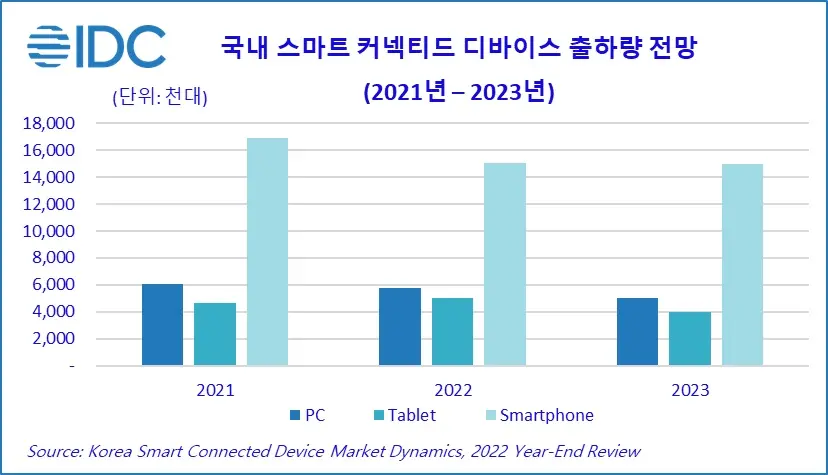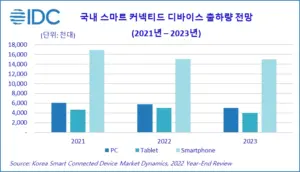According to a report by Korea IDC, the country’s smart connected device market experienced a decline in shipments in 2022. The market saw a decrease of 6.6% compared to the previous year, both domestically and globally. This decline was attributed to weakened household consumption and business spending amid the global economic downturn. However, IDC predicts that the market will gradually recover in the second half of this year or next year, driven by the growing preference for premium devices offering personalized digital experiences, seamless connectivity, and content sharing advantages.

Looking specifically at device shipments in 2022, PCs shipped 5.78 million units, marking a 4.7% decrease from the previous year. This decline was primarily due to weak consumer demand and increased channel inventory, resulting in the adjustment of warehousing volume from the second half of the year. Despite the overall market decline, there was an increasing trend in the choice of ultra-slim laptops with a thickness of 15-18 mm, offering reasonable prices, various screen sizes, and convenient portability.
Tablet shipments, on the other hand, experienced a year-on-year increase of 6.9%, with 5.01 million units shipped. However, the market turned to negative growth in the fourth quarter due to market saturation and economic recession. Factors such as premium strategies, the expansion of 5G models, larger screens, and price hikes contributed to market growth in the first quarter, establishing tablets as mobile computing devices emphasizing mobility and productivity.
Smartphones witnessed a decline in shipments, with 15.02 million units shipped in 2022, down 11.1% from the previous year. This trend aligned with the global smartphone market, which experienced negative growth of 11.3%. The decline was attributed to a slowdown in consumer demand caused by the economic recession. Notably, smartphones with 6.5-inch and larger displays accounted for 64.4% of the total smartphone market, reflecting a consumer preference for larger screens to enhance their multimedia experiences. The rise in demand for large screens was further supported by the application of new technologies that enable multi-tasking and foldable devices offering an advanced user experience in a wider work area.
Looking ahead to 2023, the domestic smart connected device market is projected to decline by 7.4%, with shipments of 23.91 million units. PCs, tablets, and smartphones are expected to decline by -13.5%, -20.9%, and -0.6% respectively. The decline is anticipated to intensify due to weakening consumer spending. However, the market is expected to gradually recover from the second half of this year or next year, leading to a decrease in the decline over the mid- to long-term.

